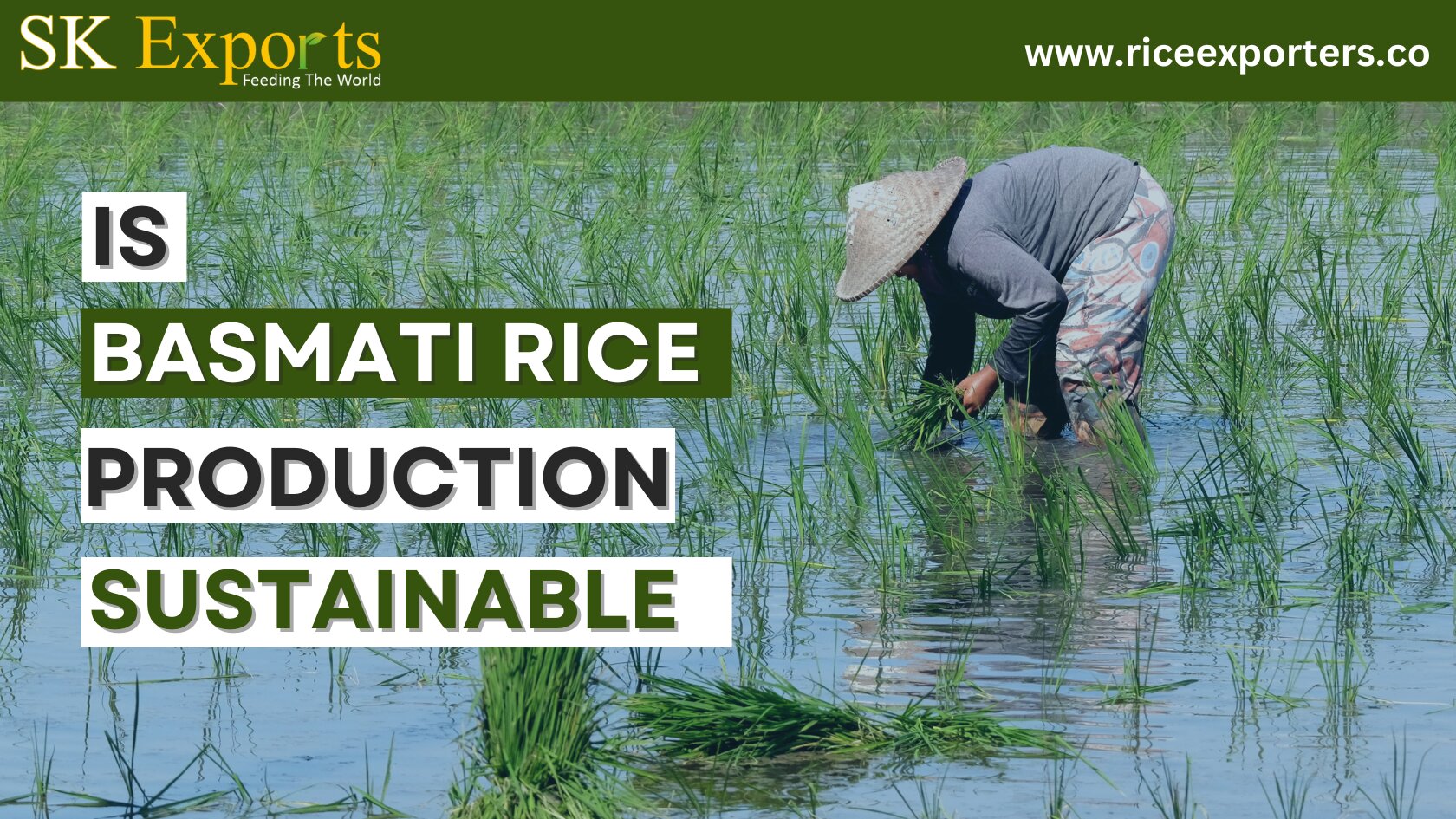The Legacy of Basmati Rice
Basmati rice, renowned for its alluring fragrance, long grains, and delicate flavor, has deep historical roots. Cultivated primarily in the fertile regions of India and Pakistan, it has graced tables and rituals for centuries, earning its name from the Hindi word “basmat,” signifying “fragrance.”
Meeting Global Demand
In recent times, the demand for Basmati rice has transcended South Asia, becoming a prized commodity in international markets. The pursuit of satisfying this escalating global demand has raised pertinent questions regarding the sustainability of Basmati rice production.
Navigating Sustainability Challenges
While Basmati rice production fuels economic growth in its cultivating regions, it simultaneously poses sustainability challenges:
The Water Dilemma
A primary concern revolves around the extensive water usage in Basmati rice cultivation. Traditionally, this rice variety is cultivated in flooded paddies, a practice notorious for its high water consumption. In regions with scarce water resources, this method sparks debates over water conservation and sustainable farming.
Impacts on Biodiversity
The monoculture nature of large-scale Basmati rice farming can adversely affect biodiversity. The focus on a single crop may diminish the variety of plant and animal species in the area, potentially leading to heightened pesticide usage.
The Pesticide Predicament
Excessive pesticide use emerges as another sustainability concern in Basmati rice farming. Farmers frequently turn to chemical pesticides to shield their crops from pests and diseases, inadvertently affecting the environment, soil health, and human well-being.
Strides Towards Sustainable Basmati Rice Production
Despite these challenges, various stakeholders are actively engaged in promoting more sustainable practices in Basmati rice production:
Water-Wise Approaches
Efforts to enhance water management techniques in Basmati rice farming are underway. Methods like the System of Rice Intensification (SRI) and alternate wetting and drying (AWD) aim to reduce water consumption while maintaining crop yields.
Embracing Organic Farming
Organic Basmati rice farming is gaining momentum, emphasizing natural pest control and eschewing synthetic pesticides and fertilizers, thereby promoting healthier ecosystems.
Fostering Biodiversity
Farmers are increasingly adopting agroforestry and crop diversification to enrich biodiversity and mitigate the ecological footprint of rice farming.
The Role of Certifications
Certification bodies like the Basmati Export Development Foundation (BEDF) and the Agricultural and Processed Food Products Export Development Authority (APEDA) in India have instituted standards to advocate for sustainable and ethical Basmati rice production.
Forging Ahead Towards Sustainabilty
Determining the sustainability of Basmati rice production is a nuanced endeavor. It varies across regions and individual farms. While challenges persist, there are promising initiatives and practices that can usher Basmati rice production into a more sustainable future:
Research and Innovation
Continued research into sustainable farming practices tailored to Basmati rice can yield insights into efficient water management, reduced reliance on pesticides, and enhanced overall sustainability.
Education and Awareness
Educating and empowering farmers about sustainable practices and their benefits are pivotal steps. Training programs and widespread dissemination of information can enable farmers to make informed choices that benefit the environment.
The Consumer’s Role
Consumers can also contribute to sustainability by supporting brands and products committed to environmentally conscious and socially responsible Basmati rice production.
In Conclusion
The journey to determine the sustainability of Basmati rice production is marked by both challenges and opportunities. Achieving sustainability requires a multifaceted approach encompassing efficient water management, biodiversity preservation, reduced pesticide usage, and heightened consumer awareness. Basmati rice, with its cultural significance and global demand, can continue to flourish while minimizing its environmental impact, solidifying its place as a sustainable crop for generations to come.
